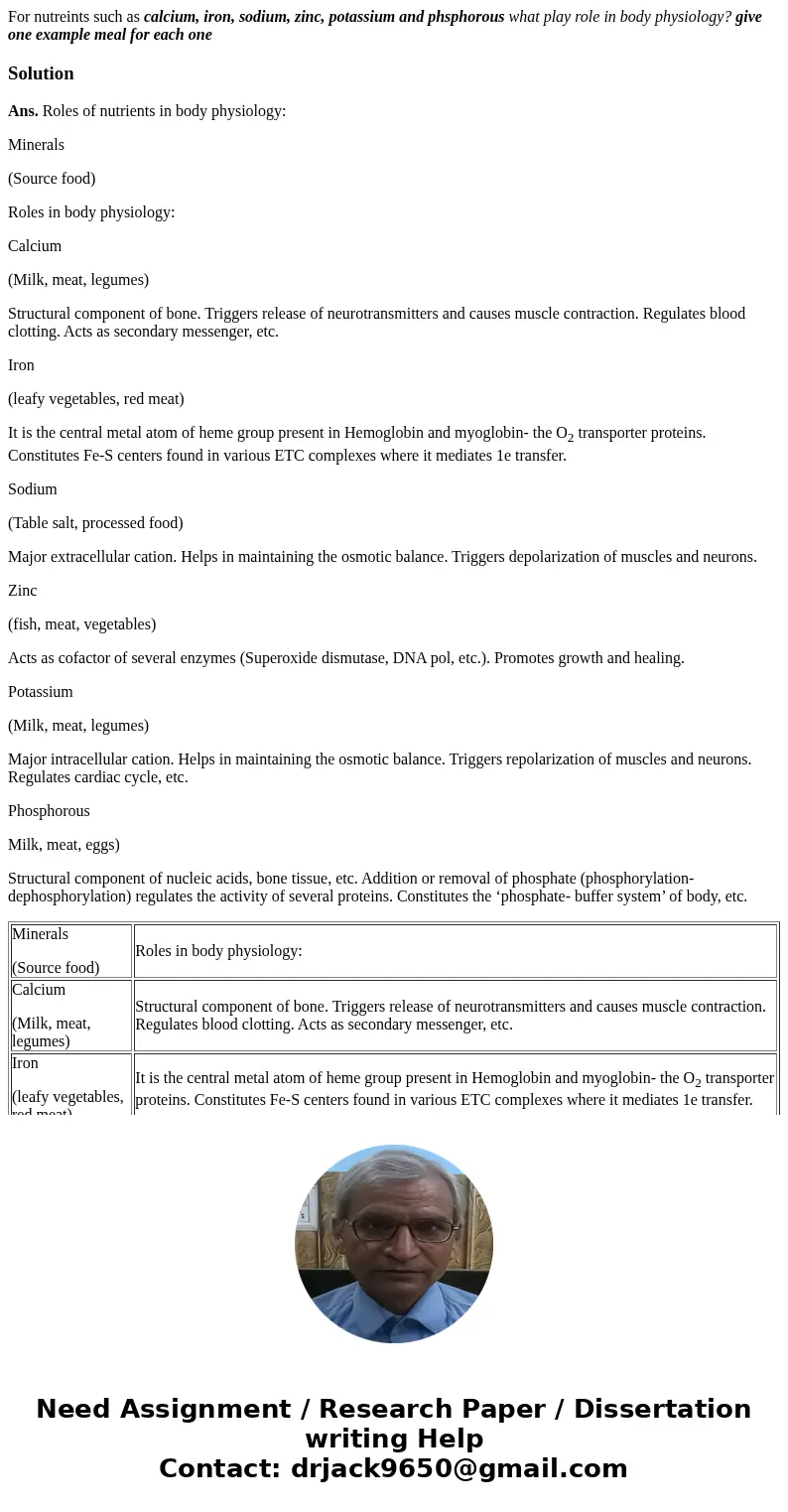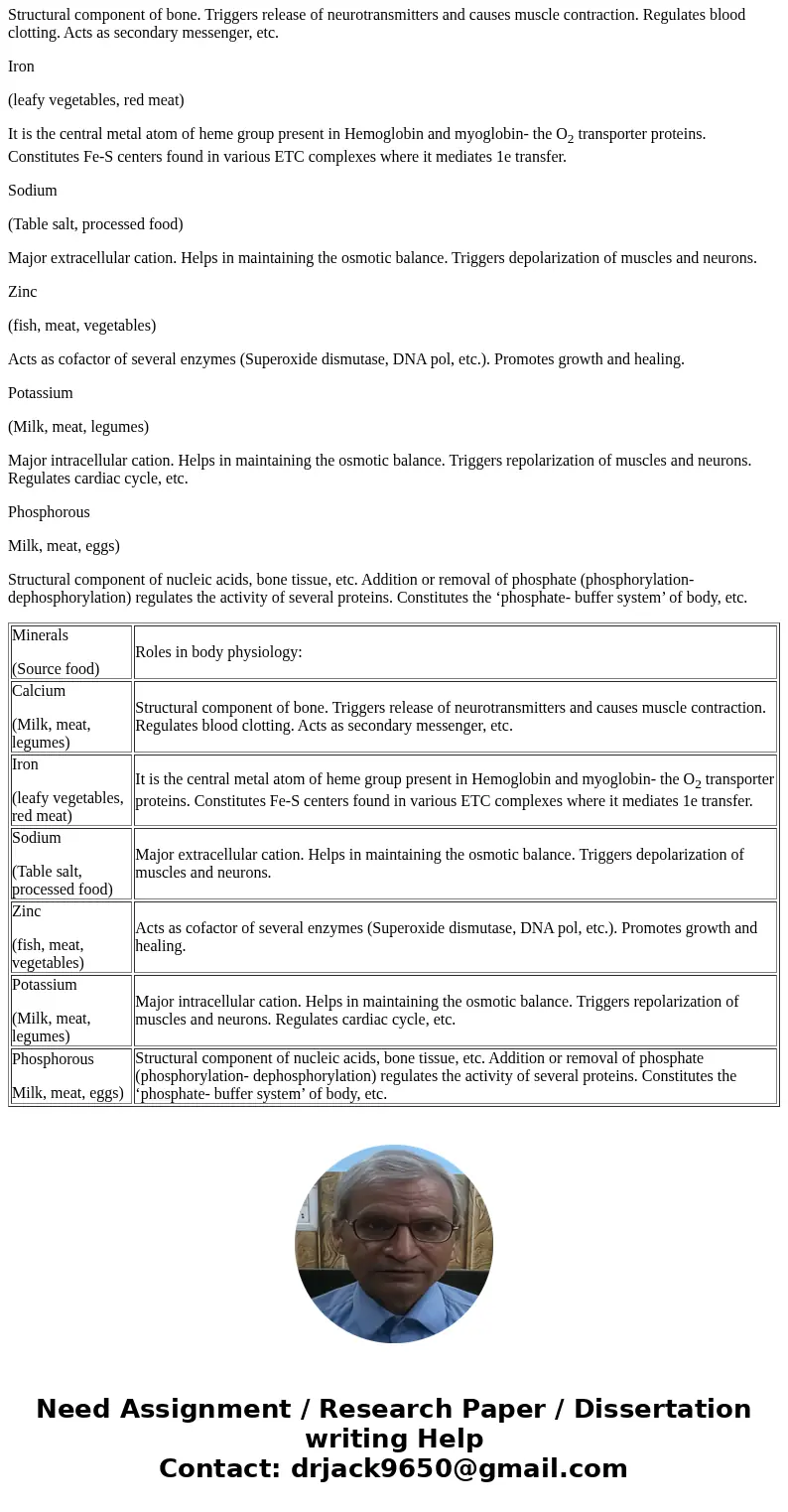For nutreints such as calcium iron sodium zinc potassium and
For nutreints such as calcium, iron, sodium, zinc, potassium and phsphorous what play role in body physiology? give one example meal for each one
Solution
Ans. Roles of nutrients in body physiology:
Minerals
(Source food)
Roles in body physiology:
Calcium
(Milk, meat, legumes)
Structural component of bone. Triggers release of neurotransmitters and causes muscle contraction. Regulates blood clotting. Acts as secondary messenger, etc.
Iron
(leafy vegetables, red meat)
It is the central metal atom of heme group present in Hemoglobin and myoglobin- the O2 transporter proteins. Constitutes Fe-S centers found in various ETC complexes where it mediates 1e transfer.
Sodium
(Table salt, processed food)
Major extracellular cation. Helps in maintaining the osmotic balance. Triggers depolarization of muscles and neurons.
Zinc
(fish, meat, vegetables)
Acts as cofactor of several enzymes (Superoxide dismutase, DNA pol, etc.). Promotes growth and healing.
Potassium
(Milk, meat, legumes)
Major intracellular cation. Helps in maintaining the osmotic balance. Triggers repolarization of muscles and neurons. Regulates cardiac cycle, etc.
Phosphorous
Milk, meat, eggs)
Structural component of nucleic acids, bone tissue, etc. Addition or removal of phosphate (phosphorylation- dephosphorylation) regulates the activity of several proteins. Constitutes the ‘phosphate- buffer system’ of body, etc.
| Minerals (Source food) | Roles in body physiology: |
| Calcium (Milk, meat, legumes) | Structural component of bone. Triggers release of neurotransmitters and causes muscle contraction. Regulates blood clotting. Acts as secondary messenger, etc. |
| Iron (leafy vegetables, red meat) | It is the central metal atom of heme group present in Hemoglobin and myoglobin- the O2 transporter proteins. Constitutes Fe-S centers found in various ETC complexes where it mediates 1e transfer. |
| Sodium (Table salt, processed food) | Major extracellular cation. Helps in maintaining the osmotic balance. Triggers depolarization of muscles and neurons. |
| Zinc (fish, meat, vegetables) | Acts as cofactor of several enzymes (Superoxide dismutase, DNA pol, etc.). Promotes growth and healing. |
| Potassium (Milk, meat, legumes) | Major intracellular cation. Helps in maintaining the osmotic balance. Triggers repolarization of muscles and neurons. Regulates cardiac cycle, etc. |
| Phosphorous Milk, meat, eggs) | Structural component of nucleic acids, bone tissue, etc. Addition or removal of phosphate (phosphorylation- dephosphorylation) regulates the activity of several proteins. Constitutes the ‘phosphate- buffer system’ of body, etc. |


 Homework Sourse
Homework Sourse